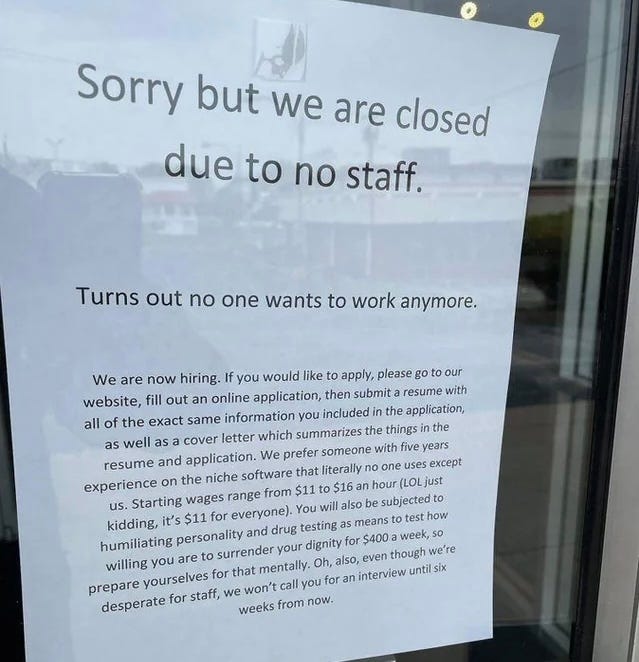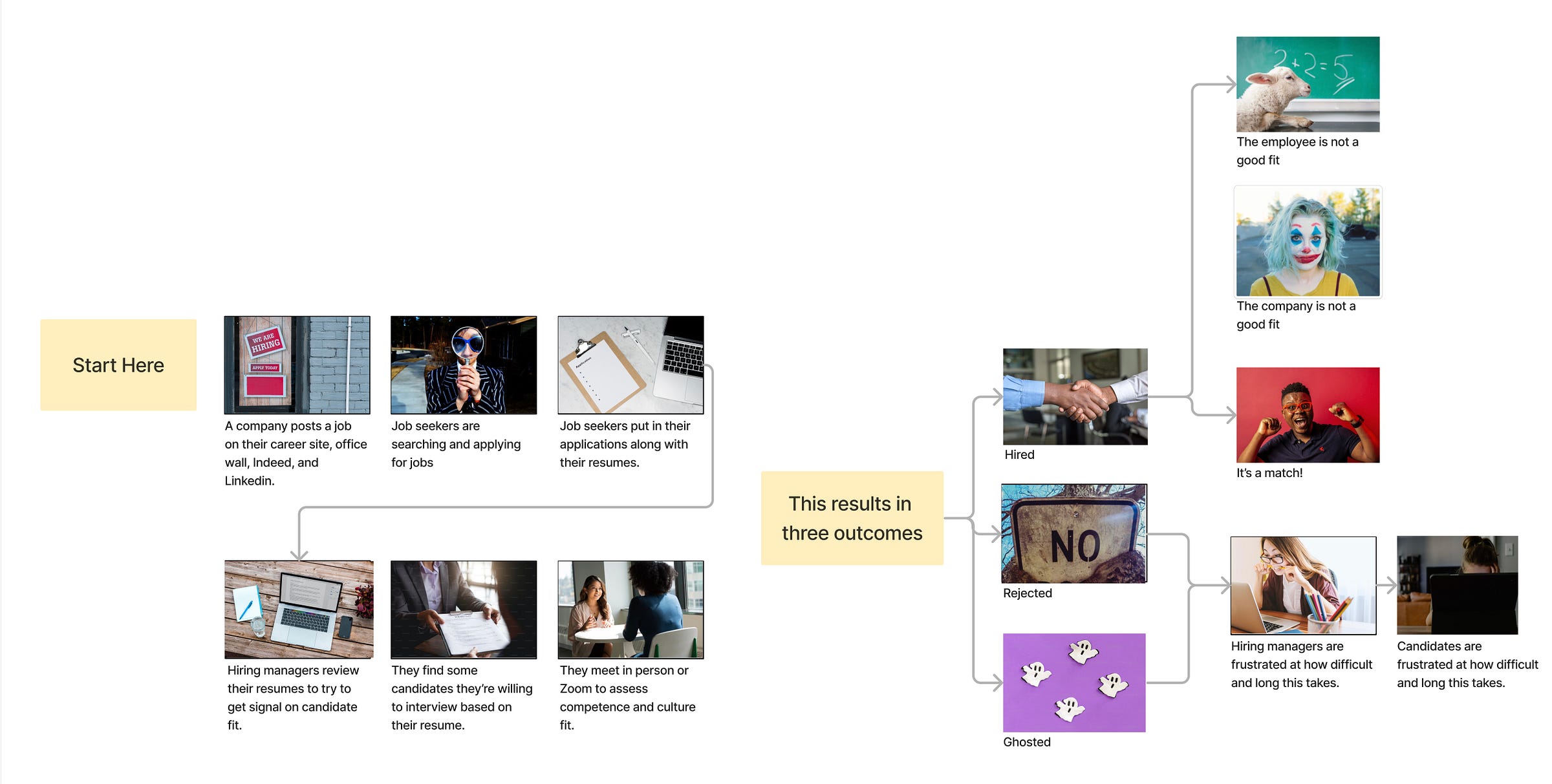Hiring is still broken
Why we still hate looking for work despite massive technological shifts in how we work

Remember the last time you searched for a job — the hours spent on job boards and application forms, the struggle to stand out in a swarm of candidates, and the palpable tension before each interview.
Or imagine yourself on the other side as a hiring manager — sifting through heaps of resumes, spending tens of hours interviewing, and worrying about hiring the wrong person amongst a sea of options.
The matching process is still broken, and there are four areas I want to expand on in this essay:
Job seekers hate looking for work
It takes a ton of time and energy to hire the right person
The cost of hiring the wrong person is high
Resumes and interviews don’t actually work
Job seekers hate looking for work
They want to find something better, but they are underemployed and systematically overlooked. Unemployed workers are profoundly unhappy when searching. There are thousands of jobs to choose from, and it’s unclear which ones would be a good fit. Many of them are spam, scams, duplicates, or expired listings. Every application requires a new username and password. Everyone hates Workday. Half of their applications enter a black box which never get a response. Every rejection can feel like an indictment of your societal value. And the only way around this for most people is to mass apply for work and hope for the best.
It takes a ton of time and energy to hire the right person
Employers want to find motivated, responsible candidates, but struggle to find them. When hiring managers open a role, they are usually in one of two bad situations:
Nobody has applied yet, which means they need to spend time and money to source candidates.
A lot of people have applied, which means they need to spend time and energy sorting through many unqualified candidates.
The cost of hiring the wrong person is high
Hiring is a matchmaking game. Both the job seeker and employers are starting situationships with each other. They filter out matches based on their online dating profile. They go on dates (called “interviews”) to test the waters and see whether they are a good match. But they also both have their roster of potential matches in their minds as backups. They both want to “keep their options open” in case a better match comes through.
The estimated cost for each hire can range from 5% up to 30% of salary. This range is based on the type of worker and whether the labor is outsourced. There are hard costs to source, screen, train, and onboard them. And there are soft costs when the position remains unfilled. Once a worker has been hired, we bias towards the status quo. “Let’s try to make it work” we say. And most company cultures and incentives are not setup for high standards. Culture is not what we say, but what we tolerate. And once a leader tolerates poor performance, the standard of work lowers for everyone.
But even after spending so much energy on sourcing and screening, it’s very possible that…
Resume screens and interviews don’t actually work
The resume is a job seeker’s "work profile." They try to use the right keywords and write the right one liners for every job. However, the stark reality is most candidates who apply are not actually qualified. Every application requires hiring managers to manually review a person’s resume. They make an educated guess in 15 seconds to determine whether the applicant will be a good employee. Often times, they don’t even look at it. They take shortcuts by using keyword matches on skills, school names, or company names. They use brand name as a proxy for fit and skill.
Interviews are often poor. Job seekers get burned when they are honest about their skills and capabilities. Common advice is to “fake it until you make it” to get the jobs they want. This increases the stakes for hiring managers to sniff out their actual skills. Many hiring managers (including myself) hire the wrong person because they interviewed well. But after they start, it often does not translate to real productivity; a punishing outcome.
And both the resume screen and candidate interview processes are rife with bias. The brand name shortcut is one example. When grabbing the resume of an ex-Google employee, they are immediately overlooking other candidates who could be a better fit. And this just covers conscious bias. An old study showed that applicants with white-sounding names were 50 percent more likely to be contacted for job interviews than those with black-sounding names. Despite this finding being widely published in 2003, I’m sure this type of discrimination still occurs today, purposeful or not.
The truth is that resumes and interviews are poor proxies for judging future performance. They give you an educated guess on someone’s motivation, potential, and capability.
It’s a matchmaking problem
I outlined a typical hiring process above. What stood out to me was:
How many steps there are to the hiring process
How unlikely the outcome will be for any given job screening to be “a match”
How many times a job seeker and hiring manager has to repeat this process to get to a good candidate
Each opening can only hire one person, and each person can only have one full-time job. Sometimes, workers secretly have multiple partners. Other times, workers openly have multiple part-time jobs. Most job openings have lots of applicants (qualified or not). Most job seekers are applying to multiple openings. This creates massive churn during the hiring process. Both employers and job seekers must deal with large volumes of emails, calls, and messages. When this becomes unmanageable, both parties stop communicating and resort to ghosting.
All these problems create wasted effort in the courtship process to land the right match. Is there a better way?
Thanks for reading! Click here to read part 2, where I talk about the meaning of work and potential solutions. If you like my work, please subscribe and share it with others!



